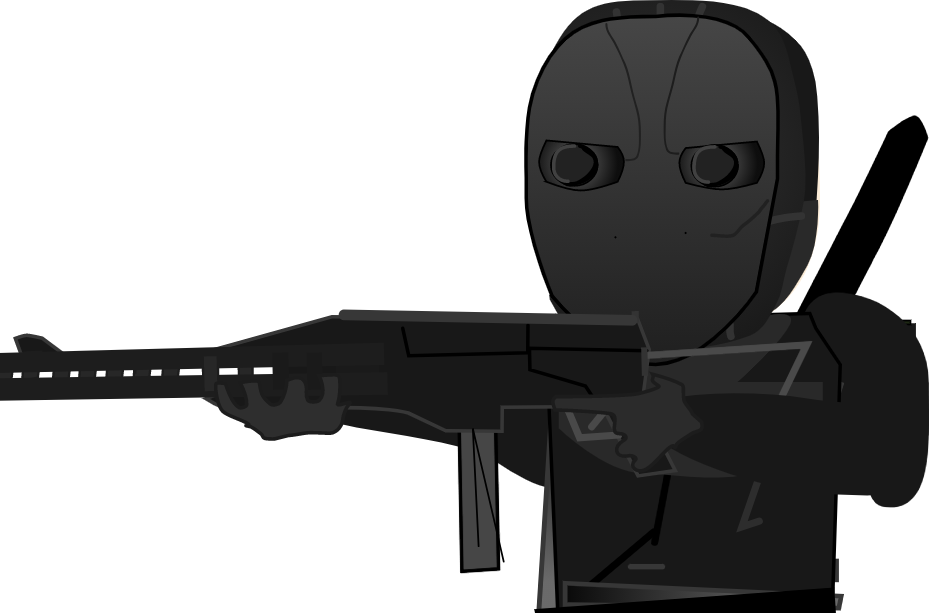Assault Corps of the Dinoranian Republic
The Assault Corps of the Dinoranian Republic (Dinoranian: Jeidsvherde àd Dinoraensk Republik, abbreviated to JDR) was one of the Federal Republic of Dinorania's two Elite Military Branches, the other being the Airborne Infantry Division. It is widely considered among the greatest military units in Dinoranian History, having earned 155 victories in the three wars in which they were involved
The JDR was associated with the Sideri Order of Immortals, and is hence officially considered a partial continuation of the ancient prophetic formation.
Formation
The JDR evolved from the Piennic Lightning Corps, an Elite group of Sideri shock troops that answered directly to General Jozen Wyveron during the Dinoranian Civil Wars of 1830 - 1842. The LC was mostly made up of Sideri soldiers who had rallied around the Piennese Cause, as well as veteran non-sideri civil war soldiers that were selected on the basis of strength and experience. The JDR was developed as a successor to the LC loyal to the Federal Republic of Dinorania by Frederik Helleck, on Wyveron's advice. Though they formed the bulk of its ranks, the JDR was the first division of its kind that was not exclusively limited to Siderii. Allmen who distinguished themselves as soldiers were allowed to join, and many are recognized as heroes for their heroics in the Dinoranian-Orùnnic War.Training
The Order of Immortals was placed in charge of training recruits into the JDR, resulting in the division becoming the most rigorously trained division in the Army of the Dinoranian Republic, with recruits subject to constant physically and mentally demanding training for as many as 70 hours per week. JDR recruits were personally trained, mentored and educated by knights of the Order, and developed the intellectual aspects of warfare as well as the physical. The JDR's Academy at Jaddeburg would produce some of the most decorated soldiers in modern history.
Selection Phase: the Viknemarsj
Recruits, prior to training, would partake in a mandatory 750 km march in full gear without stopping from Raikservad, in Rexvil State, to the JDR's base in Jaddeburg, in the State of Pienna. Intended to 'weed out the weak,' the exceptionally grueling trek was nicknamed the Viknemarsj, the March of Viknon, after the old Dinoranian demigod who was forced by Gatan to tread the cosmos forever as punishment for the theft of the goddess Ayanna's necklace. Twenty allmen would die on the march during a particularly harsh heat wave in September of 1889, and the non-stopping aspect of the trial was banned thereafter by presidential decree. As of 1890, recruits were entitled to three rest periods, four if temperatures reached 30 degrees celsius and above.Regular training phase: Jaddeburg Academy
Following the march, the recruits would. More promising recruits would be selected for the Officers' Academy, and be exempt from the Third Phase.Survival skills phase: Wyveron's Camp at Grákénsberg
Recruits that passed the first two phases were taken to Grákénsberg, in the Dinoranian Colony of Grośrexvil. They would train in harsh subzero conditions, often without proper winter clothing, and were taught the essential skills of survival, 'living off the land' in a harsh climate with little supplies or reinforcements. Spìnjavi instructors, sent by the King of Spinjav, were experts in fighting far larger enemy forces, and would teach the recruits the art of Guerilla warfare and elaborate methods of its planning and execution. Soldiers wishing to specialize in a particular category would be given the opportunity to do so in the Third Phase, with specializations such as Scouting, Long-distance Sharpshooting, Field Engineering, strategic use of explosives, even highly specialized skills such as combat on skiis and maritime raiding.The Red Wars, 1870 - 1874
The Dinoranian-Orùnnic War, 1891 - 1903
The Spìnjavi-Erolian War, 1904 - 1909
Under President Rolland Ikvald's command, JDR troops were deployed in the Spìnjavi-Erolian War, bolstering the allied Kingdom of Spìnjav's Colonial Army and utilizing specialist tactics against the numerically superior Erolian Union. JDR and ESH paratroopers were deployed during the Battles of the DS Livyatan to protect the Dinoranian Flagship against constant assault by Erolian Forces, and succeeded in securing the fleet's liberation from the Cejaud Ice Sheet in June of 1909, shortly before Dinoranian Victory in Koronasland forced the Erolians back across the border. The JDR was extensively involved in the liberation of the Kellands from Erolia, and in the 1909-1910 Chase to Lyarith, during which they fought bitterly with Erolian Forces, and managed to capture the Erolian Dictator Beredás Angulin and his family on July 1st, defeating the Erolian Union and resulting in its dissolution.Disbandment
The JDR was functionally dissolved as a combative group after the Crisis of 1938 left the Dinoranian Republic in ruins. The DSR replaced it with the Westpiennic Fantomkorpset anomalous warfare division, which was in turn replaced by the Socialist Revolutionary Spetsgrüppen of the CUSSR's Storma Corps. It was not until 1968, following the birth of Caen'ahn va'Deijen, did a new Sideri fighting force come into being, becoming the Immortal Guard of the Dinoranian Empire that served Darien XI leading up to and following his reprise of the Imperial Crown and lasting until his abdication in 1999.
Legacy
The JDR is undoubtedly recognized as one of the most effective military units in Dinoranian history.In popular culture
The term 'Viknomand' became popularized in the early 1890s following the Presidential Decree, and has passed into the Dinoranian Language as a phrase referring to a particularly long journey on foot or otherwise. The JDR and its soldiers have been depicted in countless works of art, film and fiction, most famously in Carl Feìr's 1927 film Elitsia, which helped mythologize the image of the modern Sideri soldier as a curt and brooding but fiercely loyal servant of the Republic, whilst also critiquing the nationalism of the 19th century that had spilled over into the 20th.
Type
Special Forces




Comments